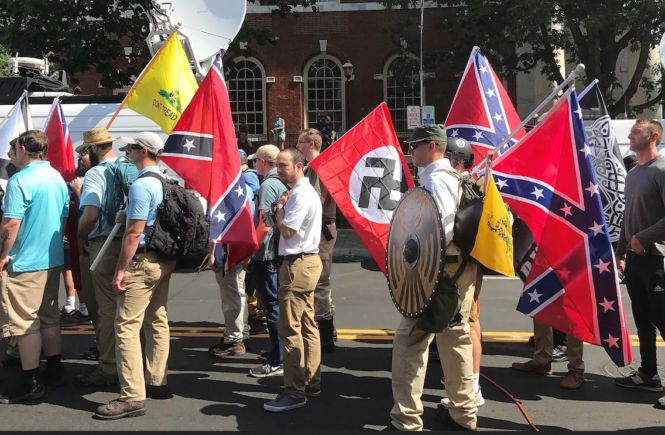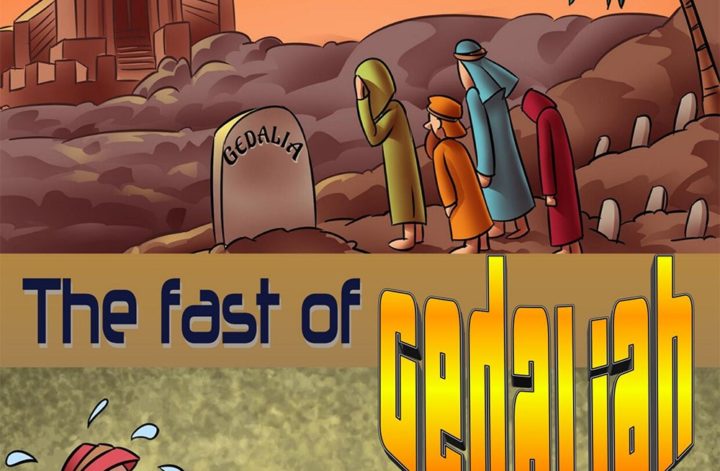Professor Leonard Weinberg is a Senior Fellow at CARR, Professor Emeritus at the University of Nevada, and recipient of both Fulbright and Guggenheim research awards.
In recent years, there has been a surge in anti-Semitic violence in the United States. The most attention was focused on the murders at the Tree of Life Synagogue in Pittsburgh, on October 27, 2018, in which 11 worshippers were killed, the shooting several months later at Chabad House in a suburb of San Diego, which left one person dead and many others traumatized. In December 2019, there was what amounted to a wave of attacks in the New York Metropolitan area. The most serious of these events was the murder of several shoppers at a Kosher grocery store in Jersey City, and an attack on Hasidim in Monsey (a New York suburb) by a machete-wielding African-American man while a Chanukah party was underway.
What is even more astonishing, however, is that these episodes were simply the most egregious examples of (less reported) assaults in the New York area, which were occurring at the pace of one per-week by the end of 2019. Then, of course, there was the Unite the Right rally in Charlottesville just over two and half years ago; an event in which close to 1,000 neo-Nazis and alt-Rightists chanted “The Jews will not replace us!” as they marched down the street.
What is, then, going on? And what, if anything, can be done about it?
Physical attacks on American Jews are hardly a new phenomenon. The FBI’s annual ‘hate crime’ statistics suggest that year-in-and-year-out Jews are the most frequent targets of religiously-based hate crimes. The watchdog organizations, the Anti-Defamation League (ADL) and the Southern Poverty Law Center (SPLC), usually confirm these findings. Is the violence symptomatic of a rising tide of anti-Semitism among Americans in general?
The answer is ‘no’. When the ADL researchers began polling Americans on their attitudes towards Jews in 1964, they found about 29% of those they questioned met their standards as anti-Semites. In 2019, using the same survey questions, the figure was down to 11%. Overall then the level of anti-Semitism in the country continues to decline. On balance, Americans tend to like Jews, they are more Philo-Semitic than anti-Semitic. In Europe, right-wing extremists often refer to the U.S. as ‘judenland’ because of the prominent role Jews play in American life.
But what about the violence? Doesn’t it suggest something wider and more dangerous? The perpetrators would like us to believe it is something truly menacing (in this regard they share an outlook with the watchdog organizations – though for quite different reasons). The answer is emphatically ‘no’. The perpetrators of attacks on Jews in the United States may grab the headlines but they really are freak attractions. How, then, can they be stopped?
Over the years, Jewish organizations in the United States have stressed Holocaust education as a way of teaching the public about the dangers of anti-Semitism, if left unchecked. Throughout the country, there are Holocaust museums (including one in the nation’s capital which was itself the target of a shooting attack some years ago), memorials, commemorations, and Holocaust education programs, all of which are intended to call attention to the murder of European Jews by the Nazis and their collaborators during World War II.
Now the Holocaust was the worst crime in the history of Western Civilization. Studying it is a worthwhile project in and of itself. And calling attention to it may have contributed to the long-term decline of anti-Semitic attitudes among Americans, but it doesn’t appear to be a deterrent to anti-Semitic violence. If anything, the relationship is positive. The more focus on the Holocaust, the more anti-Semitic violence. This seems to be true because the individuals who carry out or encourage attacks on American Jews, e.g. the late William Pierce ( author of the still widely sold The Turner Diaries), Andrew Anglin and his “Daily Stormer” website, Minister Louis Farrakhan and his Nation of Islam followers, regard the Holocaust more as an inspiration than a warning. If the Nazis could do it, maybe we can do it also?
What can, then, be done to deter attacks on American Jews under these circumstances? A few possibilities come to mind, hardly all original.
The Internet has become the principal means by which those who attack Jews are becoming radicalized. This is also true for those who assault other American minorities. So that Dylann Roof, the 19-year-old who killed 9 worshippers at an African Methodist church in Charleston South Carolina, Patrick Crusius, who murdered 22 Hispanic shoppers at a Walmart in El Paso Texas, and more than a decade ago Mathew and Tyler Williams who killed a gay couple in Redding California, and Robert Bauers, the Pittsburgh resident who murdered 11 Jews at the Tree of Life synagogue, all developed their views via the new (or even newer) social media.
The two obvious ways of dealing with this Internet-driven calls to anti-Jewish violence is first to deny access to those who promote it. This may violate First Amendment protections if done by government agencies, but it doesn’t prevent private individuals and organizations from hacking and disrupting ‘hate speech’ from employing this way of tackling the problem. Second, and this is certainly already underway, the FBI and the watchdog organizations can monitor the various Internet sites widely used by the violence-supportive anti-Semites. When advocacy, or as most would characterize as being ‘hate speech’, turns to conspiracy and planning – law enforcement agencies will be prepared to act.
A third option involves a focus on the perpetrators. With the exception of Louis Farrakhan and his followers and the Black Israelites (responsible for the Jersey City attack), the individual perpetrators mentioned above were single white men – either living alone or, as adults, with their mothers. Robert Bauers, 43 years-old at the time of his attack, fits this description to a ‘T’. The problem is one of social isolation. Is there anything to be done about this? Perhaps. Local authorities in Sweden are experimenting with housing techniques for better integrating lonely individuals into society by promoting their involvement with neighborhood groups. This type of alternative seems worth exploring. Also worth pursuing, the Simon Wiesenthal Center in Los Angeles has developed a pilot program aimed at assisting individual neo-Nazis in abandoning their cause and resuming more normal careers.
Of course, not all violent attacks on Jews are the work of ‘lone-wolves’. Many of these assaults have been perpetrated by groups. Here, it is worth making a distinction between organized groups of young men, such as the Atomwaffen and ‘the Base’, and more fluid groups brought together for what one analyst labels ‘transgressive fun’, e.g. taunting orthodox Jews on their way to or from the synagogue; in effect, a depressing form of ‘violence with a smile’. As we have seen, however, from recent attacks, such behavior can have devastating consequences.
Space doesn’t permit much commentary here and therefore pointing to the Israeli experience will have to suffice. For the first 20 years of its existence, Israel was surrounded by implacable enemies, Arab states whose leaders threatened to exterminate the Jewish state and whose ‘street’ often called for blood. Despite all the hostile rhetoric accompanied by some cross-border violence, Israel’s enemies were not able to make good on their threats. Why not?
The answer is ‘deterrence’. Notwithstanding the bombast, Arab leaders became aware that attacks on Israeli targets almost always resulted in a response by the Israeli Defense Forces (IDF). The cost of attacks against Israel exceeded the benefits to be gained, rhetorical or otherwise. There may be a lesson to be learned from this experience.




